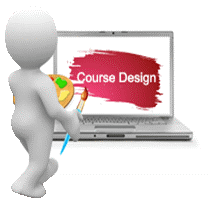Designing an E-learning Course? Keep This Checklist Handy

Checklists are essential when you undertake an important task they remind you of all the steps you need to complete to finish the task, list out what you need to do, and more importantly, give you a sense of accomplishment as you tick off each item on them.
→ Download Now: Instructional Design 101
Similarly, it is important to have a checklist when designing an e-learning course because it records a list of things to remember and do when designing the course and acts as a handy reference. Following the checklist will ensure the quality of the course. So what should your checklist contain? Read further to find out.
Learning Objectives
Learning objectives describe what the learner will be able to do after he completes the e-learning course. Ensure content and assessments are aligned with the learning objectives.
Remember, everything starts with the learning objectives:
- Objectives should be measurable, that is, they should allow for framing questions and evaluation
- Content should relate directly to the objectives
- Assessments should measure how far the objectives are accomplished

Content
Content should be chunked at the course level and then at the screen level so that it flows smoothly. Information should be grouped logically. The content should be:
- Free of grammatical and syntactical errors
- Follow the rules of punctuation and grammar
- Use a conversational tone to allow learners relate to the context
Instructional Delivery Method
The instructional delivery method should be appropriate for the content. The content can be facts, concepts, principles, processes, and procedures, or a combination of two or more types. The instructional strategy should be planned appropriately. Things to check include:
- Analogies and examples can be used to explain difficult concepts.
- The examples and analogies used in the course must be relevant to the audience and related to the subject being taught.
- Icebreakers should be included at the beginning of the course to catch the learner’s attention and motivate him to take the course.
- There should be a balance between the on-screen text, images, and audio elements used in the course.
- Content should be summarized.
- Glossary is used to explain key concepts and terms.
A best practice to follow is use one-third of the content for presentation and dedicate
two-thirds of the content for application and feedback.
Assessments and Feedback
When framing assessments, ensure the content for the assessments is covered in the course. The questions should be simple and clear which the learner can understand. The assessments should be relevant, challenging, and realistic. Various types of questions and quizzes must be used. In your checklist:
- Include formative assessments at the end of each topic
- Feedback should be adequate, they should not be one-liners
- Feedback should explain why an answer is correct/incorrect and reinforce learning
- Include a post-course assessment
Graphics and Fonts
These must meet the standards set by the client. The images and graphics must be of high quality and the design must be uniform throughout the course. The course must be developed using standard templates. The brand and visual guidelines specified by the client should be adhered to. The GUI must be uniform throughout the course. Check if:
- Spacing and alignments are appropriate , at least 50% of the screen should be white space
- The usage of logos is apt
- Colors used are uniform and conform to the client’s palette
- Text is easy to read and does not clash with the background colors
- Graphics and icons are used for important concepts
- Images are clear
- The format of visuals used throughout the course is consistent, for instance, vectors
- Fonts are used to distinguish headings and body content
Accessibility and Navigation
The course navigation must be designed to be self-directed and result-oriented. This adheres to adult learning principles as well. The navigation must be clear and consistent. Horizontal and vertical scrolling must be avoided. Also check for:
- Hyperlinks – they should be clearly identified and must work
- Minimum use of external links
- Backward links to navigate to previous screens
- Instructions regarding page controls and navigation are specified
Technical Issues
Technical issues include the speed at which the course loads and its accessibility on all web browsers. Other factors to check are:
- Audio and on-screen text are in sync
- Shortcut keys have been defined
- Dimensions are enhanced for the target audience
The checklist given above is a basic guide. Though each course you design may be different in terms of content and audience, you can follow this checklist, adding more specialized checkpoints to enhance your work. Good luck!




![4 Challenges of End-To-End E-learning Development [Infographic]](https://blog.commlabindia.com/hubfs/Imported_Blog_Media/end-to-end-elearning-development-challenges-infographic1.jpg)
![4 Tips to Design Multi-Device Compatible Courses [Infographic]](https://blog.commlabindia.com/hubfs/Imported_Blog_Media/tips-to-design-multi-device-compatible-courses-infographic1.jpg)